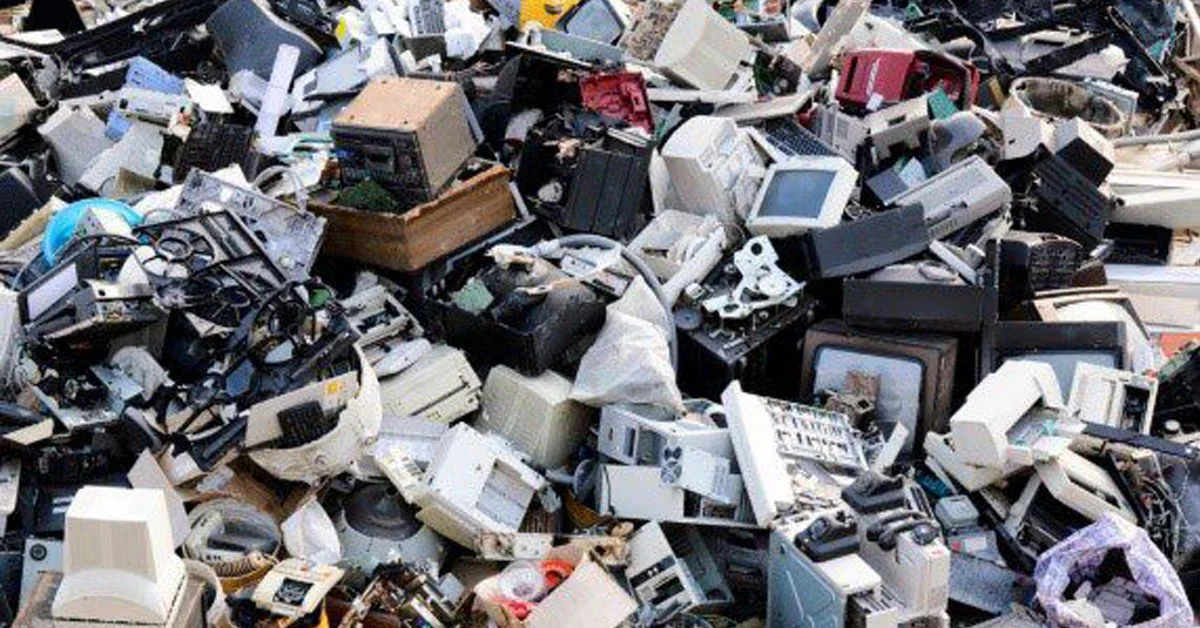What is e-waste?
Electronics that are no longer needed, broken, or nearing the end of their “useful life” are referred to as “e-waste.” Electronic items that are used every day includes, cell phones, main boards, obsolete laptops, computers, televisions, VCRs, stereos, copiers, and fax machines.
A little history on e-waste
The problem of how to get rid of old and undesirable gadgets is not a recent one; it has existed at least since the 1970s. But a lot has changed since then, especially how many electronics are thrown out now. Another thing we have today is a name for this problem. After numerous titles were proposed, including “Digital trash,” the term “e-waste” came to be accepted. With the implementation of a system to collect refrigerators in 1991, Switzerland launched the first electronic trash recycling system. In later years, additional electric and electronic components were included into the e-waste system.
Sources of e-waste in Pakistan:
E-waste when any electronic appliance or its part , no more useable, even after repair, goes in e waste, is produced in Pakistan mostly from three domestic manufacturing, domestic consumption, and import sources. E-waste is gathered by scrapers and merchants after being discarded from these sources. Sometimes, they disassemble the garbage into numerous sections, which is sold to extractors and dismantlers in turn. Extractors and dismantlers take precious and valuable materials using environmentally harmful technology, and the residual trash is frequently dumped in dumping grounds or water bodies.
Reassembling various components of outdated machinery for resale is occasionally done by scrapers and dismantlers. Workers engaged in recycling tasks might not fully understand the risks associated with recycling or disassembling electronics, exposing them to high toxicity. In order to remove valuable metals, crude recycling procedures like physical disassembly, open burning, acid baths, and usage of blow torches are used.
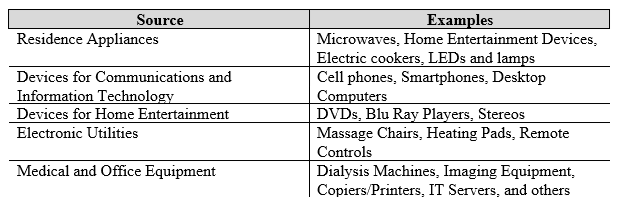
Annual e-waste production
In Global Context:
The table clearly shows that amount of e-waste being produced is increasing rapidly, meaning it is still present on this planet somewhere causing several health issues. Total unrecycled e-waste on Earth to this day is 347 Metric tons.

In Asian Context:
24.9 Mt of electronic waste were produced in Asia, of which 2.9 Mt were appropriately collected and recycled (Forti et al., 2020). Table lists some of the Asian nations that produce the most electronic garbage
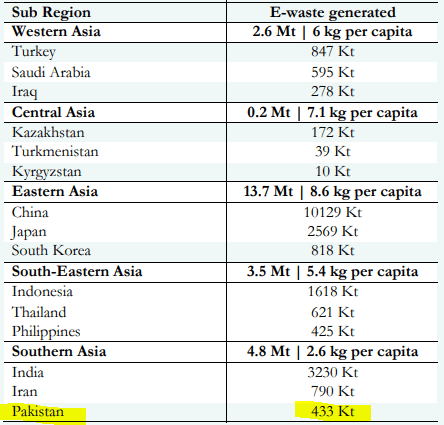
In Pakistan’s Context:
In Pakistan, domestic e-waste generation is estimated to be 1,790 kilotons per year (2018–2019) and is projected to increase by 10.2% each year. There are reportedly 95,145 tonnes of imported e-waste each year.
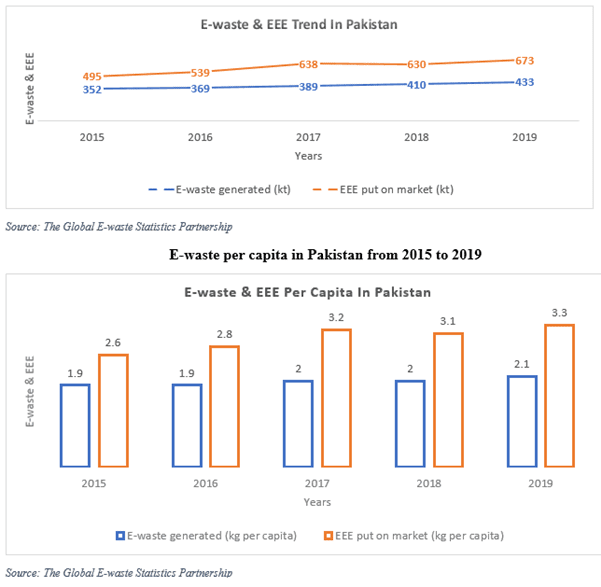
In Pakistan, Karachi is the main city for the recycling and destruction of e-waste. An estimated 12.46 kilotons of used computers were brought into Karachi from several nations in 2014. E-waste recycling is known to take place in several districts in Lahore. E-waste is frequently broken down and repurposed in enclosed spaces with inadequate ventilation. According to Dawn, e-waste recycling, disassembly, and refurbishment are also carried out in Faisalabad, Gujranwala, and Peshawar.
Regulation & Legislation regarding E-waste
National Legislation in Pakistan
Pakistan is a developing nation, and its parliamentarians are doing an excellent job of enacting new legislation. The rules listed below can be applied when dealing with e-waste because it can have harmful impacts on the environment
1. NATIONAL ENVIRONMENTAL POLICY, 2005
Pakistan’s environmental issues, particularly the inefficient waste management that can have a severe influence on the ecosystem, are addressed in the National Environment Policy of 2005. It suggests adopting legislative measures to ensure that harmful emissions are restricted, recycled, and controlled. It encourages the creation of a licencing system for companies engaged in waste management.
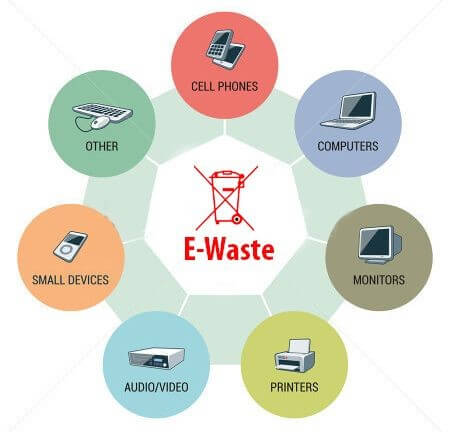
2. PUNJAB ENVIRONMENTAL PROTECTION ACT, 2012
This law covers the collection, production, consignment, handling, transportation, and disposal of waste that could contaminate. These are the topics that Sections 13 and 14 address. If a provincial agency believes that the release or emission of any effluent, waste, air pollutant, or noise, or the disposal of waste, or the handling of hazardous substances, will have a negative impact on the environment, the agency may issue an environmental protection order under Section 16.
3. PUNJAB HAZARDOUS SUBSTANCES RULES, 2018
The Schedules 1, 2, 3, and 4 contain a list of the chemicals and the threshold amounts that are covered by these regulations for the collection, generation, handling, consignment, transit, treatment, disposal, manufacture, and storage of hazardous substances in the province of Punjab. Once a year, the relevant authorities must check the industrial activity in question and submit a report to the Environmental Protection Agency detailing how well the occupants are following the requirements.
International Treaties
1. Basel Convention
To restrict the movement of hazardous waste between countries, and in particular to forbid the transfer of hazardous waste from industrialised to less developed nations, an international agreement known as the Basel Convention on the Control of Transboundary Transportation of Hazardous Wastes was established. The Convention also aims to help LDCs manage the hazardous and other wastes they produce in an environmentally sound way, as well as to reduce the quantity and toxicity of wastes produced, ensure their environmentally sound management as close as possible to the point of generation, and reduce wastes overall.

2. Stockholm Convention on Persistent Organic Pollutants
The Stockholm Convention on Persistent Organic Pollutants (POPs) requires that each party take steps to reduce or eliminate the unintentional release of POPs like hexachlorobenzene, pentachloro benzene, polychlorinated biphenyls, polychlorinated dibenzo-p-dioxins, and dibenzofurans from open burning of waste.
Effects of E-waste to mankind and environment
Unless e-waste is disassembled and recycled, e-waste has no negative effects on the environment or human health. The main cause of these effects is the improper methods and techniques used to disassemble and recover the materials from e-waste, which exposes workers engaged in recycling and disassembling activities to the hazardous materials found in these electrical and electronic equipment (EEE).Different amounts of heavy metals are present in e-waste. The valuable heavy metals are extracted from e-waste using a variety of techniques. Heavy metals like lead, aluminium, iron, tin, copper, barium, nickel, zinc, indium, ruthenium, cobalt, palladium, silver, selenium, and rhodium, for instance, are present in the average personal computer.
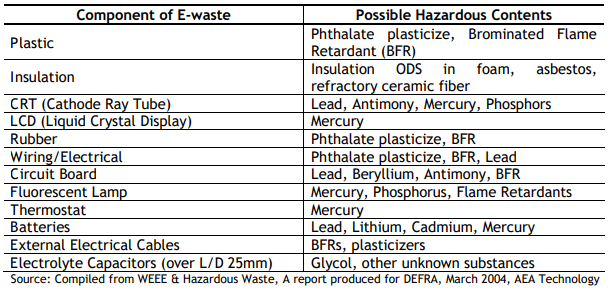
How e-waste is managed in the Western World?
E-waste is managed in industrialised nations by being collected and then recycled at the proper E-waste recycling facilities. The channels for collection include municipal collection, store take-back, and producer take-back, among others. Municipal collection programmes are run by the government, whereas the “Extended Producer Responsibility” idea applies to merchants and manufacturers who take back e-waste. At approved recycling facilities created especially for recycling the E-waste, the collected E-waste is subsequently put through a rigorous recycling process. These facilities run according to various organisational models.
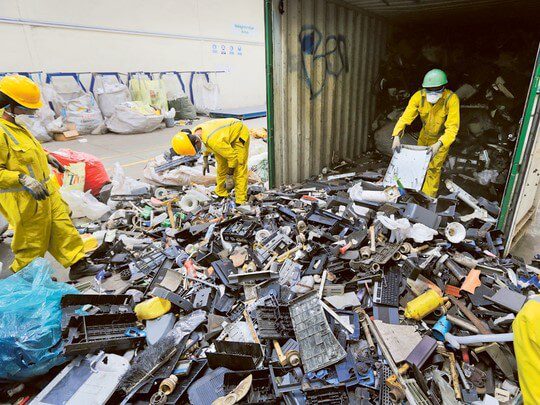
E-waste management in Pakistan!!
Pakistan is one of 15 nations that view the recycling and dismantling of electronic waste as being a serious health risk. But among the three nations, India is the one where e-waste recycling is most widespread. The remaining two are China and Brazil. E-waste is gathered from homes, businesses, and streets in Pakistan by scrappers, street rubbish collectors, or scavengers. Without paying it any particular attention, this e-waste is combined with other general rubbish and processed as waste.
These scavengers and scrap metal dealers sell this trash to local waste haulers. Each category of waste is sold by the small waste collectors to a certain waste contractor after being separated into several categories. This garbage is sold to recyclers by the waste contractor. The electrical and electronic equipment is either recycled to recover valuable materials or repaired and sold on the market as used equipment by the recyclers. The valuable materials are sold to a particular market or buyer.
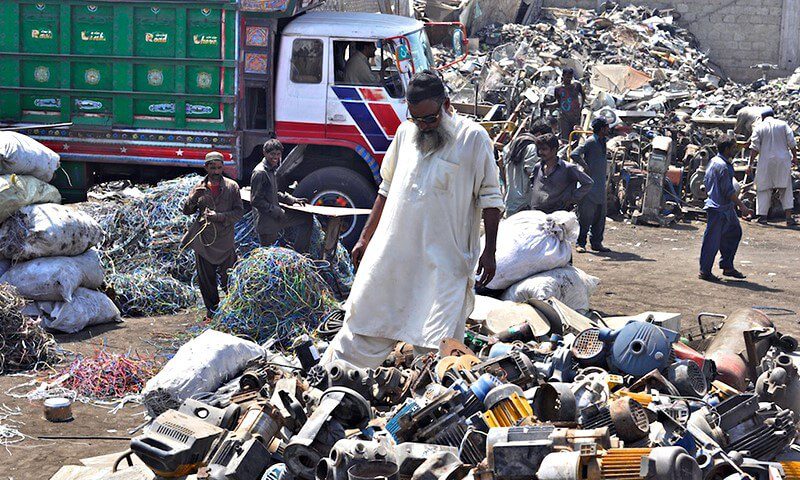
Conclusion:
E-waste recycling involves responsibly disposing and recycling electronic devices to reduce environmental impact and promote a circular economy While other hand Recharging wells is the intentional restoration of groundwater levels to sustain water security & support ecosystems. In small villages solid waste management focuses on systematically collecting and treating waste to maintain cleanliness, prevent pollution, and enhance public health. Each concept addresses specific environmental challenges, contributing to sustainability in diverse ways.
Way forward :
E-waste can cause severe issues and bear potential hazards, when handled unproperly so either we have to build facilities where the dismantling process could be done or leave the e-waste as it is because that would be more feasible for the environmental and human health. Technology from developed countries should be imported to resolve this emergency. We import a lot of e-waste from western world while use only a portion of it, ultimately increasing e-waste mass in our country who has not an extensive command in handling this kind of waste. A huge potential still present to handle this e-waste.
- Awareness campaign
- Segregation and treatment as per international practices to comply national laws
